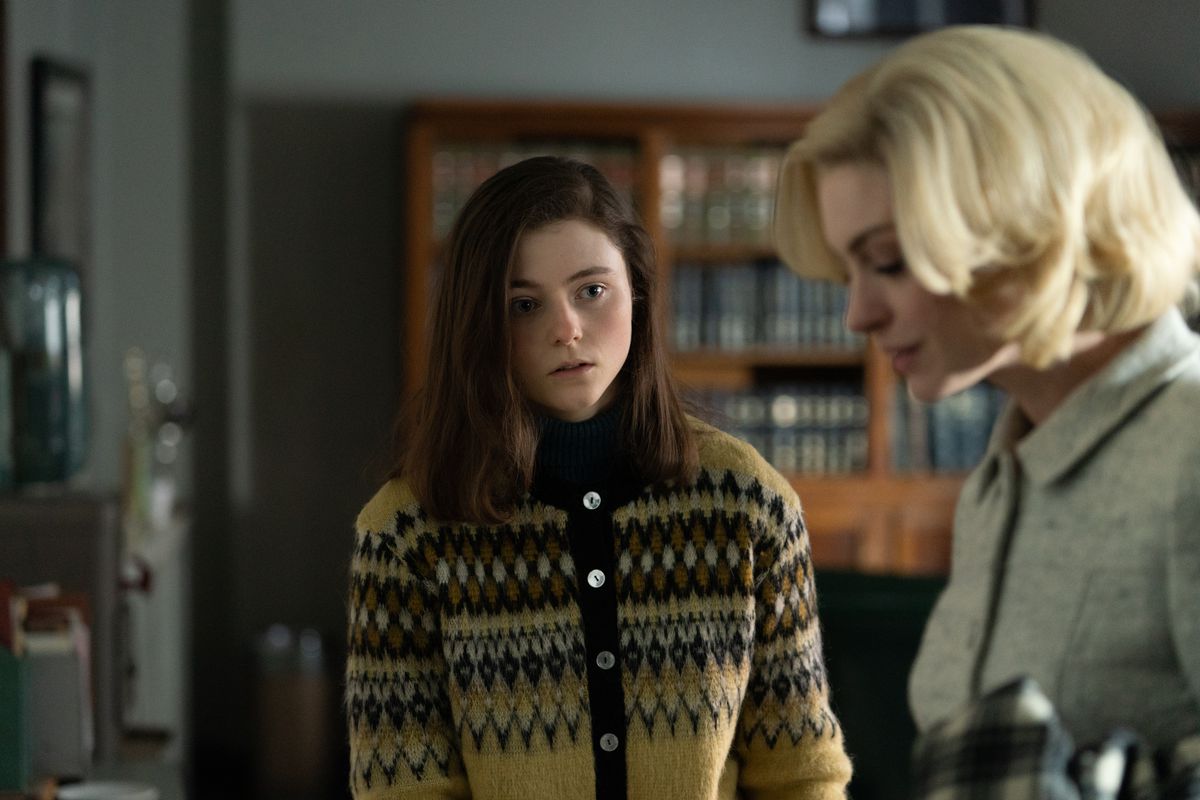Some movies are safe. Eileen is a dare.
Sometimes a film doesn't feel so much like a dialogue between audience and artist, but rather like a grand game. Perhaps a challenge where a filmmaker challenges viewers to determine what kind of story they are watching before they reach the end. Tight thriller by William Oldroyd Eileen feels like that kind of movie: a dodgy psychological drama of small shocks and barely restrained passions, surreptitiously putting one foot on the ground and then asking you to guess where the next one will go.
Based on the novel by Ottessa Moshfegh, who co-wrote the script with Luke Goebel (also her writing partner on the 2022 Jennifer Lawrence film) Causeway), Eileen takes place in 1960s Boston, where Eileen Dunlop (Old And The power of the dog's Thomasin McKenzie) works as a clerk for a local jail. There she meets new counselor Rebecca (Anne Hathaway), a glamorous cosmopolitan vision of a woman. Eileen falls in love immediately. As their relationship deepens, both women enable each other's worst impulses until they're in way over their heads.
Oldroyd, known for the arresting historical piece from 2016 Lady Macbethholds the camera as tight as Eileen's script. His solution for adapting a first-person novel that revolves around the interiority of a character is to make that interiority the central mystery of the film. EileenEileen's cast is small, and everyone in it delivers in some way: Eileen's alcoholic father, Jim (Shea Whigham), wants to carry on as if he's still a member of the police force, even though all he does is armchair drinking. The other secretaries and clerks in the prison offices giggle and gossip in a well-defined, everyday display of working womanhood. tsk-tsk-ing Eileen for the awkward way she imitates their well-rehearsed dance.

Photo: Jeong Park/Neon
Rebecca is also a performance. How could she not be? Her hair is so perfect, her poise so practiced, her makeup assured in its application. Where, Eileen silently wonders, did this woman learn to be this way, and could Eileen learn it too?
In shaping Eileen's character, Thomasin McKenzie walks a dramatic tightrope: effortlessly showing the effort her character puts into performing for others, without tipping her hand as to what may lie within Eileen's soul. Both EileenMcKenzie's script and choices portray her character as someone who wants to be human, even a certain kind of human, but doesn't know how, or even for what purpose. So she settles for voyeurism: In the film's opening scene, she sits in her car in a lovers' lane, surreptitiously watching a pair of strangers make out in a second car. She flirts with the idea of masturbation, but stops abruptly and stuffs dirty snow up her skirt.
Eileen sees Rebecca as her long-awaited North Star, and in her obsession it becomes difficult to tell whether she wants to be with Rebecca, or are Rebekah. McKenzie gives no clues about her character's inner thoughts; her life essentially runs on autopilot. And Moshfegh and Goebel's script offers only one darkly comic insight: Eileen's recurring fantasy of killing her father.

Photo: Jeong Park/Neon
Despite its compactness and intimate focus, Oldroyd maintains enough ironic distance that the audience is never fully immersed in Eileen's subjective point of view. By the way he lingers on details and nervous restlessness, the director invites the audience to speculate about what is going on. Real what happens next for Eileen, how that will affect the unwise decisions she makes, and what ultimately underlies Rebecca's performance.
In this way, Oldroyd invites the audience to speculate about what kind of film Eileen will prove to be, as he flits from pulp thrills to cringe comedy to psychosexual cat-and-mouse and beyond. Not every viewer may enjoy being played with it; on first viewing, Eileen's opacity can be frustrating and the contours of her story bewildering. Yet EileenThe woman's thin structure is also sensible in the way it lingers: on Eileen trying on her late mother's dress, on lipstick stains on a cigarette, on the golden glow that illuminates Rebecca in a bar, or on the smoke that enters the cabin of a car.
These understated images make an indelible impression, encouraging audiences to replay the film in their minds as they watch it, to actively participate in the dance that Oldroyd has carefully choreographed, and to imagine how different it might feel if you start over and know all the steps. . Eileen came to play. Will you?
